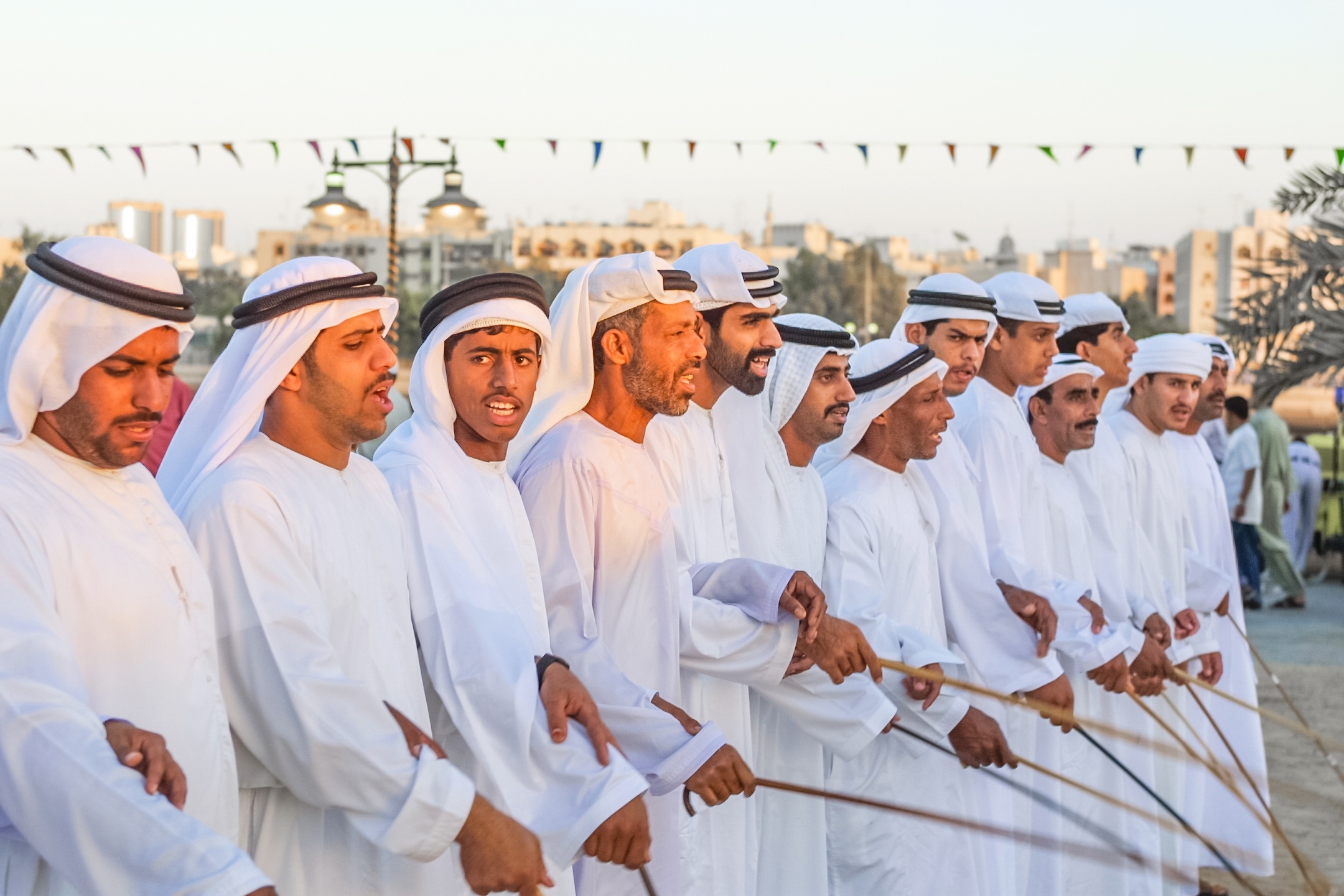History & Heritage
3.14.2019
Al Alaya, an inclusive dance from UAE registered in the intangible cultural heritage of UNESCO

Listed as intangible cultural heritage items of Humanity of UNESCO since 2014, al alaya, also called “stick dance” is a traditional art widely spread in the United Arab Emirates and Oman.
This ancestral folk dance traditionally performed after a particularly successful pearl fishing or victorious tribal war is now part of the Bedouin cultural heritage of the region. Simulating a fight between two rival clans, it usually consists of two rows of men facing each other, advancing towards each other in synchronization as in a fight, while stirring a stick of bamboo (symbolizing a sword) to the drum rhythms.
Songs, percussion and dance
Associated with the nomadic culture of the desert, this dance embodies the spirit of cooperation and unity of the United Emirates. It combines physical performance, Bedouin songs and traditional music. The musicians are usually at the center of the two rows of dancers, playing various instruments such as drums, cymbals and flutes. There are several variations of al alaya: Ayyalat ahl albar, a version born in desert oasis communities that is played mainly on coastal cities like Abu Dhabi or Fujairah. It includes dance and percussion. Razfa al-ayyala, born inland, it is played in Al Ain and is accompanied by no music but Bedouin songs and rifles replace the stick, symbolizing the victory after the fight.
This dance is also inclusive because it brings together people of all social classes, and even young women are sometimes invited. We then speak about Raqs Al Nashaat, a dance where women stand in front of men and stirr their hair from side to side, demonstrating their confidence in the protection provided by male performers. They usually wear traditional dresses and gold jewelry. This performance dates back to the days when women came out of houses and removed their veils to call men’s spirits and motivate them to defend the tribe’s honor.
Intangible cultural heritage of the region
After a joint effort by the United Arab Emirates and the Sultanate of Oman, al-Ayyala has been on UNESCO’s list of intangible cultural heritage since November 2014. A victory for the unique cultural heritage of this region, which allows to preserve these traditions but especially to transmit the necessary knowledge and skills, from generation to generation to keep intact this art representative of the regional identity.
Today, if those dances are mostly performed in weddings and other social gatherings, many festivals or performances are organized to perpetuate the tradition, such as those given each Friday at the Louvre Abu Dhabi or during the Qasr el Hosn festival in Abu Dhabi.
popular

